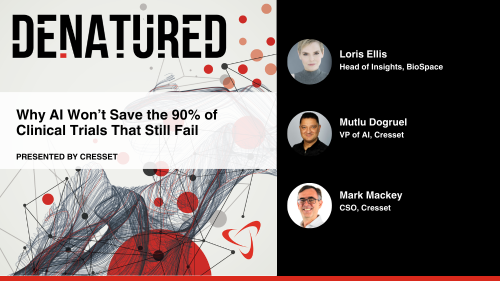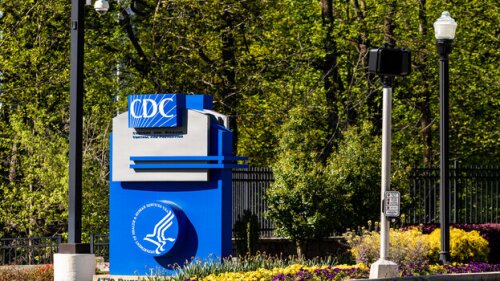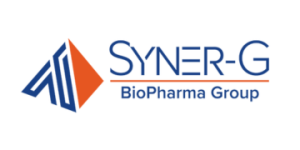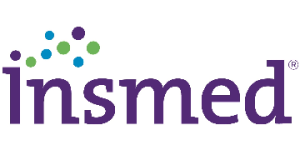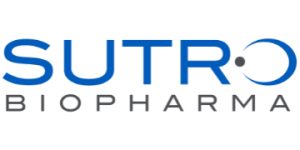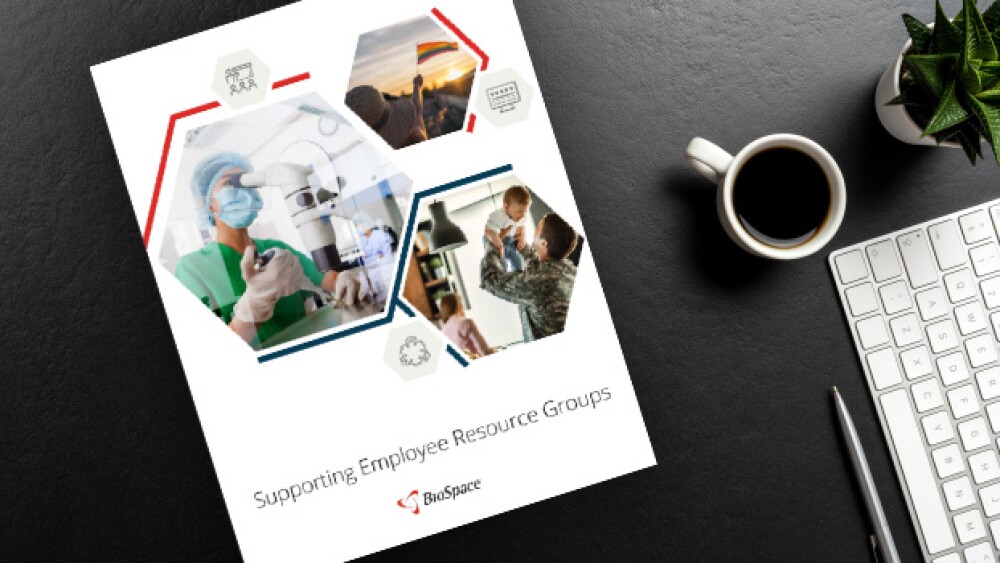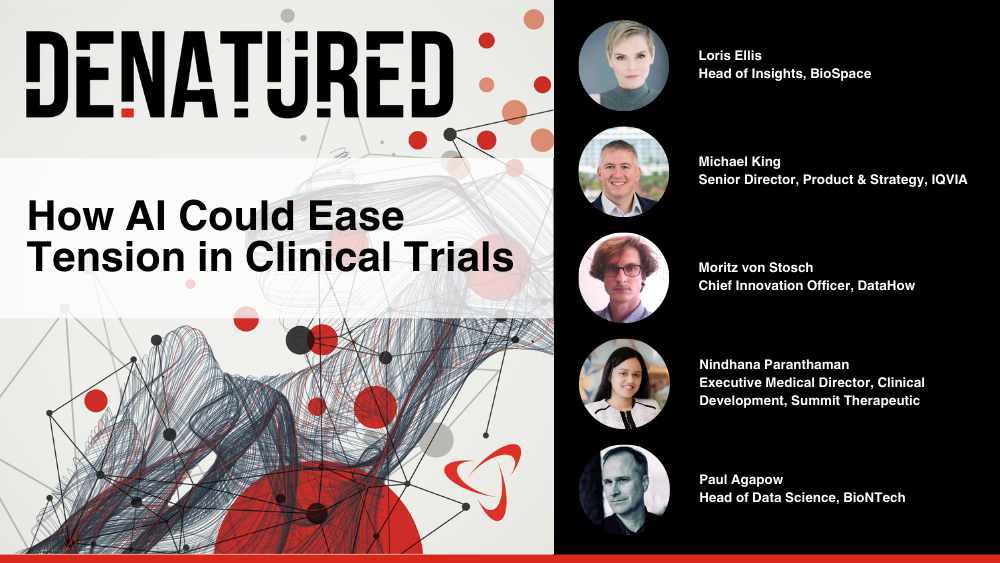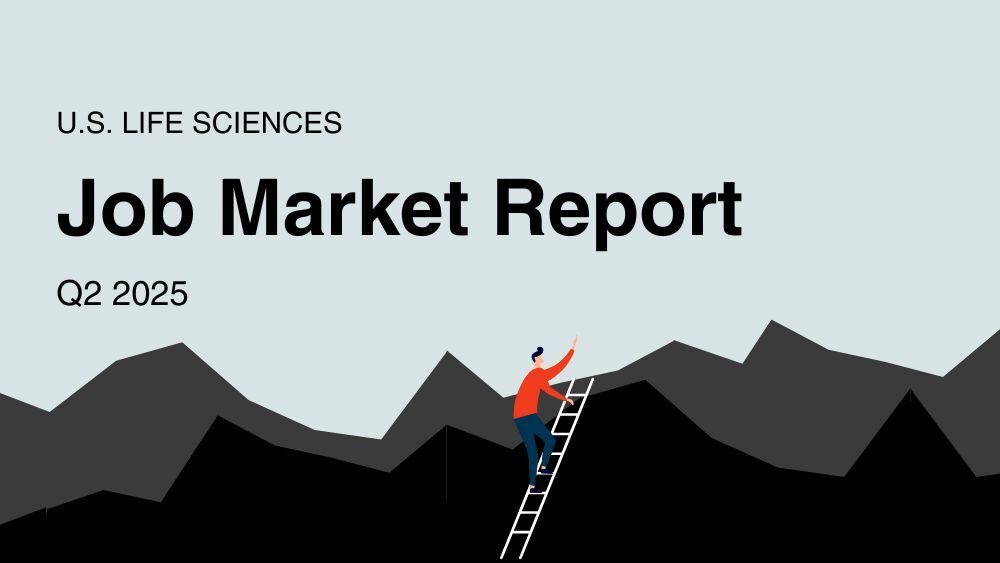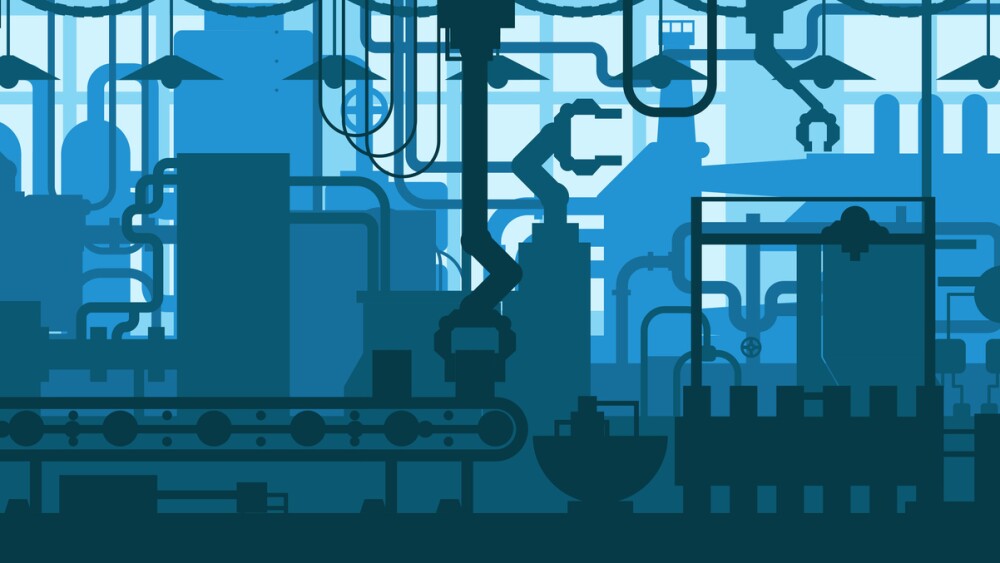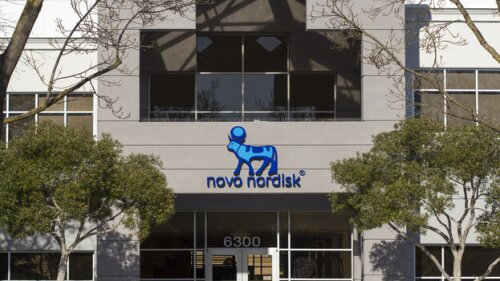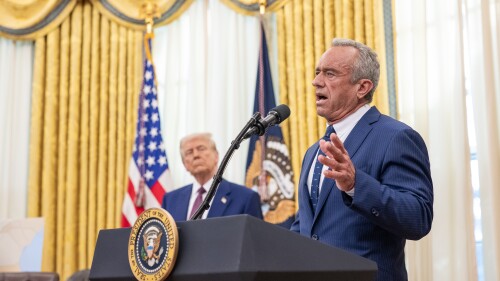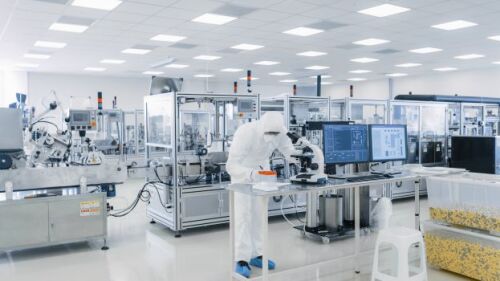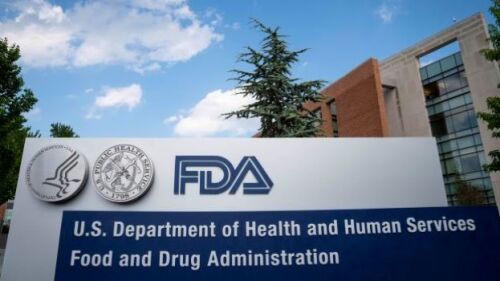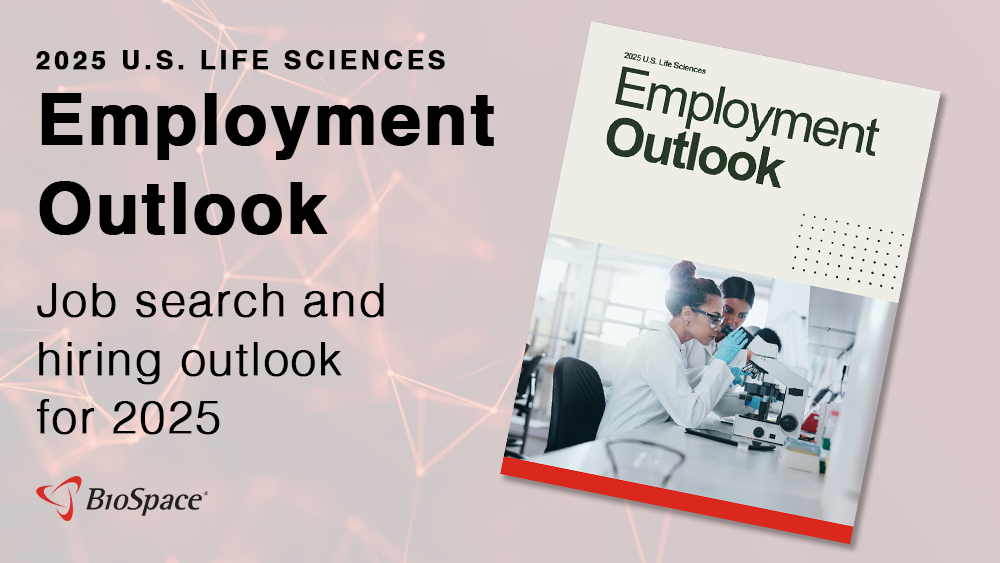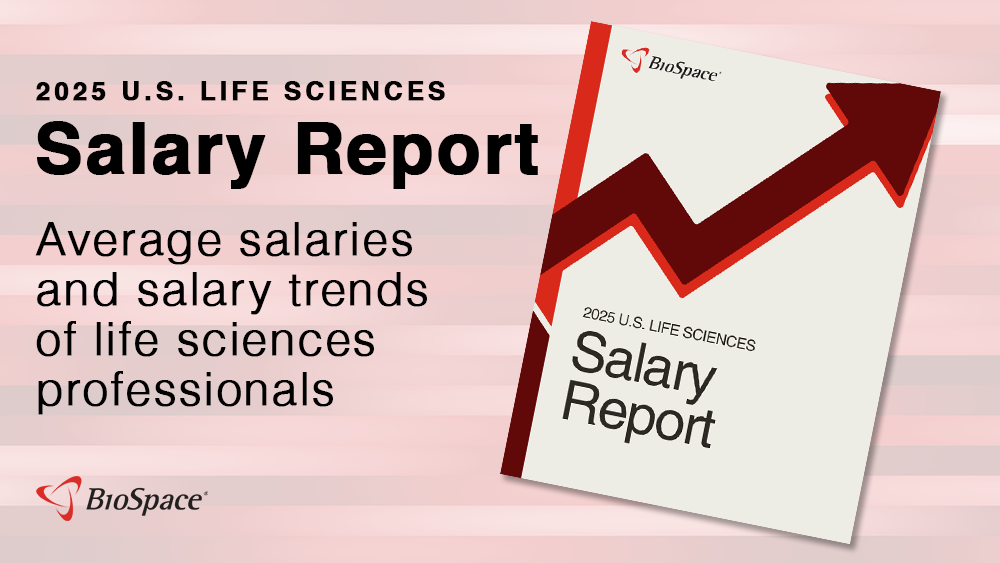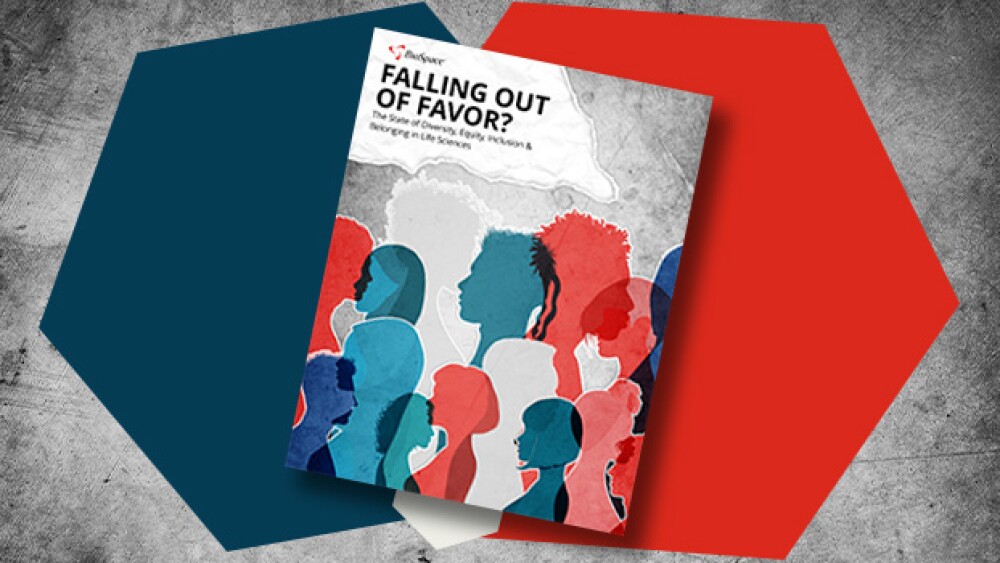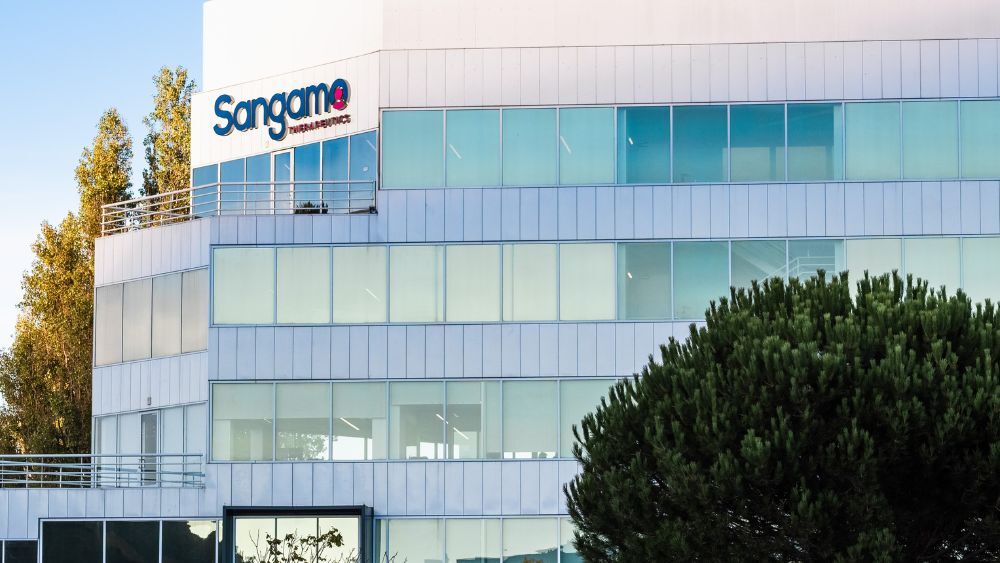In this episode presented by Cresset, BioSpace’s head of insights Lori Ellis discusses clinical trial fail rates and AI’s potential to reduce preclinical costs with Mutlu Dogruel, VP of AI and Mark Mackey, CSO of Cresset.
Stealth BioTherapeutics originally submitted elamipretide for approval in January 2024, only to receive a rejection in May of this year. In addition to accepting the biotech’s resubmission, the FDA has promised to take action on the candidate by Sept. 26.
President Donald Trump first threatened pharma tariffs in February and recently said they were imminent. Johnson & Johnson’s new investment adds to a $55 billion pledge made by the company in March.
Hundreds of HHS Staffers Accuse RFK Jr. of ‘Sowing Public Mistrust’ Against CDC After Shooting at HQ
In an open letter, Health and Human Services employees asked the Secretary to stop and disavow the spread of health misinformation, particularly about vaccines, infectious diseases and federal health agencies.
The delays, first revealed in Regeneron’s Q2 report, were chalked up to manufacturing issues at Novo Nordisk-owned plants.
Looking for a biopharma job in Massachusetts? Check out the BioSpace list of nine companies hiring life sciences professionals like you.
FEATURED STORIES
Pharma stocks went on a wild ride Wednesday amid whiplashing tariff threats from the U.S. president.
Experts express concern that last week’s unprecedented FDA layoffs will trigger a little-known mechanism that could result in a “disaster” the Trump administration doesn’t see coming.
As the industry awaits official word from the administration on how the tariffs will hit, analysts go over the possibilities with one certainty: there will be increased costs for medicines.
Wegovy and Zepbound are just the latest drug dyads to face-off in the competitive pharma market, continuing a legacy of rivalry that includes blockbuster drugs Keytruda, Humira and Eliquis.
Billions in market cap are being shed as the markets reel over President Donald Trump’s escalating trade war. Eli Lilly’s value has dropped more than $95 billion in just one month.
Long considered resistant to economic downturns, the pharmaceutical industry may face a greater challenge this time around as GLP-1s dominate and the population grows older.
LATEST PODCASTS
J&J beat expectations this week to launch the Q3 earnings season; a study about children treated with bluebird bio’s Skysona comes at a bad time for the company; Sen. Warren calls for scrutiny of Novo’s purchase of Catalent; and other news.
In the third episode of our mini series on artificial intelligence, Lori and guests continue their exploratory discussion on AI and the opportunity in patient lives.
Cell and gene therapy investment rebounds; WuXi Biologics and other companies named in BIOSECURE Act mull options; Bayer, J&J and Pfizer’s recent layoffs; updates from the weight loss space.
Job Trends
Relay Therapeutics, Inc., a clinical-stage precision medicine company transforming the drug discovery process by combining leading-edge computational and experimental technologies, announced a clinical trial collaboration with Pfizer Inc. to evaluate atirmociclib, Pfizer’s investigative selective-CDK4 inhibitor, in combination with RLY-2608 and fulvestrant in patients with PI3Kα-mutated, HR+, HER2- metastatic breast cancer.
Subscribe to Genepool
Subscribe to BioSpace’s flagship publication including top headlines, special editions and life sciences’ most important breaking news
SPECIAL EDITIONS
In this deep dive, BioSpace explores the next big thing in obesity.
BioSpace did a deep dive into biopharma female executives who navigated difficult markets to lead their companies to high-value exits.
BioSpace data show biopharma professionals faced increased competition for fewer employment opportunities during the second quarter of 2025, with increased pressure from further layoffs.
DEALS
-
Novo Holdings’ acquisition of Catalent has ignited concerns from industry stakeholders, who fear that the consolidation could limit competition, but there is also the possibility that the deal could represent an opportunity for smaller-scale CDMOs to find new partners.
-
With $70 million upfront and more than $1.8 billion on the line, Roche will gain access to Flare’s drug discovery engine to bolster its oncology pipeline.
-
With Novo Holdings’ $16.5 billion buyout of Catalent being reviewed by regulators, what work the contract drug manufacturer may or may not be performing for Eli Lilly remains a point of contention.
-
In a deal worth up to $285 million initially for the lead program, Novo Nordisk will gain access to Ascendis’ TransCon technology platform in an effort to find novel GLP-1 candidates with reduced dosing frequency.
-
Biogen touted strong Q3 sales of its Alzheimer’s drug Leqembi a day after announcing a deal worth up to $1.45 billion with Neomorph to discover and develop molecular glue degraders.
WEIGHT LOSS
-
Versant Ventures continues to invest in the increasingly competitive obesity space, this time launching Helicore with $65 million and a GIP-targeting asset intended to induce higher-quality weight loss.
-
The GLP-1 IPO arena has been heating up for the past two years and Metsera’s ask is one the largest in recent history.
-
Patients taking Novo Nordisk’s Wegovy plus Veru’s enobosarm saw 71% lower lean mass loss than those who were taking Wegovy alone but investors await more data.
-
The readout comes on the heels of CagriSema’s disappointing Phase III performance, where it missed Novo’s projection of 25% weight reduction.
-
The San Diego–based company’s molecules avoid the well-trod GLP-1 pathway in favor of an alternate route in the gut.
POLICY
-
Vocal skeptics of COVID-19 vaccinations gave mRNA a bad name and government funding for mRNA research is now being cut. On the flip side, at least one CEO said the pandemic also provided “elevated acceleration” for the field, which also holds promise in therapeutics for cancer and rare diseases.
-
The report takes from HHS Secretary Robert F. Kennedy Jr’s playbook, calling out rising autism rates, the vaccine schedule and over medication of children as reasons for chronic diseases.
-
In an opinion issued late Thursday night, U.S. District Judge Susan Illston wrote that the president and department agency heads do not have the authority to reorganize the government without Congress’ input.
-
The “One Big Beautiful Bill Act” includes negotiation exemptions for orphan drugs approved to treat more than one rare disease and has implications for PBMs. Also on Thursday, the White House released its MAHA report with a mission to “make our children healthy again.”
-
Canada’s health agency says it has been “taking all necessary action safeguard the drug supply and ensure Canadians have access to the prescription drugs they need.”
As automation ramps up in the coming years, many jobs will be lost to machines. Here are a few life science sectors that are expected to maintain steady growth in the coming years.
Landing your first internship can be a major milestone in your career journey. Here’s what you can do to set yourself up for success and make the most of your life science internship.
The best thing a professional can do when considering a position at the FDA is weigh the pros and cons. To help, we’ve created a guide to working at the FDA, with benefits, challenges and tips.
The life science field offers a wealth of opportunities, even for those working outside of the field. Here are six life science jobs that don’t require industry experience.
With so many differences in research and regulation, it’s more important now than ever for job seekers considering moving outside of the U.S. to educate themselves before they make the leap.
To help you in your job search, here are just a few of the remote job options in the life science industry, along with the qualifications and skills necessary to be successful in each role.
HOTBEDS
IN CASE YOU MISSED IT
New York City has seen increased life sciences employment during the past decade as public funding and key projects like JLABS @ NYC have given the area a boost. A Partnership Fund for New York City executive discusses the city’s strengths and a notable challenge facing businesses.
REPORTS
In this Employment Outlook report, BioSpace explores current workforce sentiment, job activity trends and the prospective job and hiring outlook for 2025, particularly as it compares to the previous year.
BioSpace’s third report on diversity, equity, inclusion and belonging in life sciences examines dramatic shifts in attitude around diversity initiatives.
CANCER
-
Abecma made $406 million in 2024, of which BMS paid $43 million to 2seventy bio as part of their profit-sharing agreement.
-
The FDA’s Oncologic Drugs Advisory Committee recently voted to narrow the label for checkpoint inhibitors Keytruda and Opdivo in stomach and esophageal cancers based on PD-L1 expression levels—but the high unmet need in these patient populations should also be considered.
-
On the agenda for the FDA this month are two RNA-based treatments for rare diseases.
-
Imfinzi is one of AstraZeneca’s key growth drivers for 2025, with potential approvals in stomach and bladder cancers. The PD-L1 blocker brought in over $4.7 billion in sales last year.
-
The new formulation of Keytruda, currently under FDA review, is sparking conflict with Halozyme, which makes enzymes that convert intravenous drugs into injectable versions.
NEUROSCIENCE
-
The monthly maintenance regimen, which offers a more convenient frequency than the initially approved treatment schedule for patients with Alzheimer’s, could help with Leqembi’s thus far disappointing uptake and sales.
-
Vigil Neuroscience reported a strong safety profile and 50% sTREM2 reduction in an early-stage trial for VG-3927, potentially representing a new avenue for treating Alzheimer’s disease.
-
In a good-news-bad-news week for Biogen, the company will cut an undisclosed number of employees, just as a higher dose of its Ionis-partnered therapy Spinraza for spinal muscular atrophy will be considered by the FDA and EMA.
-
The drugs’ active ingredient, glatiramer acetate, has been linked to more than 80 cases of anaphylaxis worldwide since December 1996 and six patient deaths.
-
The U.S. Court of Federal Claims ruled that Vanda cannot claim a breach of confidentiality for specifications that it did not develop itself.
CELL AND GENE THERAPY
-
Sangamo is on course to run out of money within months and has now lost access to up to $220 million in milestone payments from Pfizer.
-
The approval concludes what has been a difficult regulatory path for Ryoncil, which suffered FDA rejections in 2020 and 2023.
-
Tenaya’s share slump following the TN-201 data drop could be due to its “significantly lower” level of RNA expression in the Phase Ib/II trial than in preclinical models, according to William Blair analysts.
-
Bristol Myers Squibb aims to generate around $1.5 billion in savings through 2025—a goal that it hopes to reach by lowering third-party expenditures, focusing only on key growth brands and cutting some 2,200 jobs by year-end.
-
When hiring job candidates to work on cell and gene therapies, companies look for more than just technical skills. Talent acquisition executives from Bristol Myers Squibb and Intellia Therapeutics offer an inside look at what they want in an employee.




